Neuroscience 17c – Disorders of Cognition
advertisement
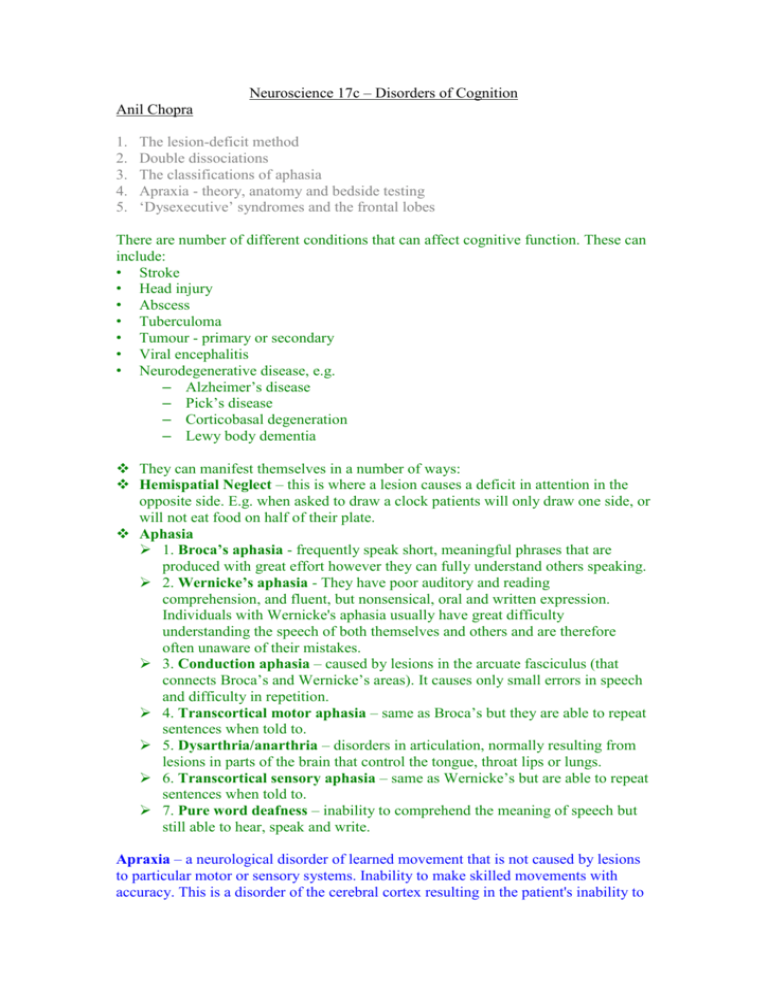
Neuroscience 17c – Disorders of Cognition Anil Chopra 1. 2. 3. 4. 5. The lesion-deficit method Double dissociations The classifications of aphasia Apraxia - theory, anatomy and bedside testing ‘Dysexecutive’ syndromes and the frontal lobes There are number of different conditions that can affect cognitive function. These can include: • Stroke • Head injury • Abscess • Tuberculoma • Tumour - primary or secondary • Viral encephalitis • Neurodegenerative disease, e.g. – Alzheimer’s disease – Pick’s disease – Corticobasal degeneration – Lewy body dementia They can manifest themselves in a number of ways: Hemispatial Neglect – this is where a lesion causes a deficit in attention in the opposite side. E.g. when asked to draw a clock patients will only draw one side, or will not eat food on half of their plate. Aphasia 1. Broca’s aphasia - frequently speak short, meaningful phrases that are produced with great effort however they can fully understand others speaking. 2. Wernicke’s aphasia - They have poor auditory and reading comprehension, and fluent, but nonsensical, oral and written expression. Individuals with Wernicke's aphasia usually have great difficulty understanding the speech of both themselves and others and are therefore often unaware of their mistakes. 3. Conduction aphasia – caused by lesions in the arcuate fasciculus (that connects Broca’s and Wernicke’s areas). It causes only small errors in speech and difficulty in repetition. 4. Transcortical motor aphasia – same as Broca’s but they are able to repeat sentences when told to. 5. Dysarthria/anarthria – disorders in articulation, normally resulting from lesions in parts of the brain that control the tongue, throat lips or lungs. 6. Transcortical sensory aphasia – same as Wernicke’s but are able to repeat sentences when told to. 7. Pure word deafness – inability to comprehend the meaning of speech but still able to hear, speak and write. Apraxia – a neurological disorder of learned movement that is not caused by lesions to particular motor or sensory systems. Inability to make skilled movements with accuracy. This is a disorder of the cerebral cortex resulting in the patient's inability to organize the movements rather than clumsiness due to weakness, sensory loss, or disease of the cerebellum. It is most often caused by disease of the parietal lobes of the brain and sometimes by disease of the frontal lobes. Patients have the desire and ability to carry out the movements. E.g. even if the left arm is not paralysed, if there is a lesion in the left hemisphere then it can be caused because the left hemisphere is the “organiser” of the movement. Skilled movements are stored as ‘motor engrams’ in the posterior left hemisphere (parietal lobe) and are executed by the transfer of the ‘memory’ to the left frontal lobe (for the right hand) and thence to the right frontal lobe (for the left hand). Ideomotor apraxia – impairment in the performance of skilled movement. Ideational apraxia – impairment in the sequential use of motor objects. Double Dissociations This is an experimental technique in which two areas of the neocortex are dissociated with two behavioural tests, each test being affected by a lesion in one zone and not the other. If the two parts of the brain are functionally different then patients who struggle with the task of one localisation are likely to do well in the other and vice versa. e.g. In a series of patients with traumatic brain injury, one might find two patients, A and B. Patient A has difficulty performing cognitive tests for, say auditory memory but has no problem with visual memory. Patient B has the opposite problem. By using neuroimaging (or neuropathology post mortem) to identify the overlap and dissociation between lesioned areas of the brain, one can infer something about the localisation of function in the normal brain. Executive Functions: these are processes of control i.e. the parts of the brain which allow us to co-ordinate psychological processes such as memory, attention, perception, in order to achieve goals. These include: – Inhibition: Stroop Test (say the colour of a word of another colour) – Flexibility: Wisconsin Card Sorting Test (put cards into different orders) – Planning: Tower of London Test (move beads from one pile to another) – Multi-tasking: Multiple Errands Test (List of task to do) – Judgement: Cognitive Estimation (random estimation questions)
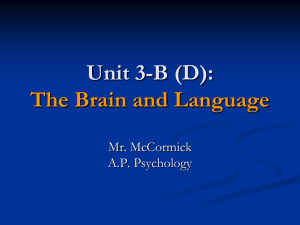
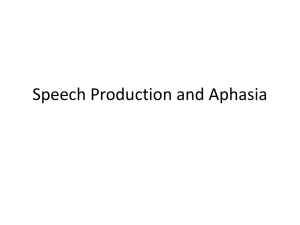
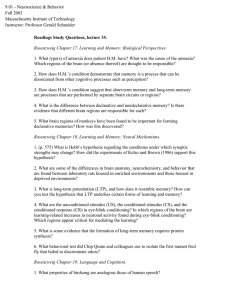
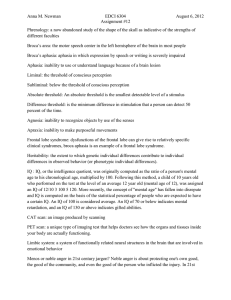
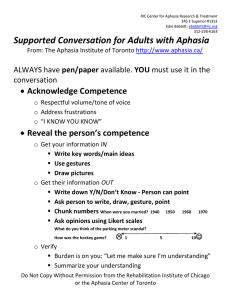


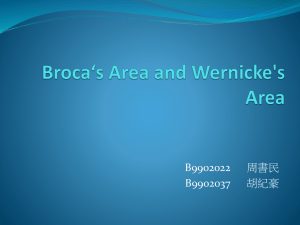
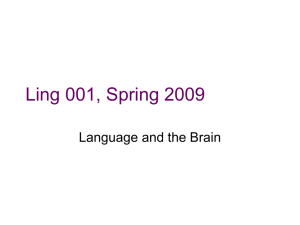

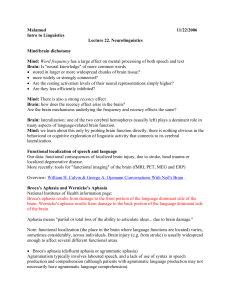
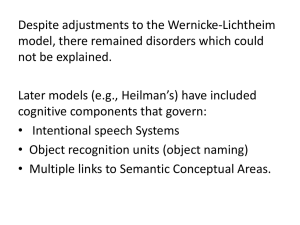
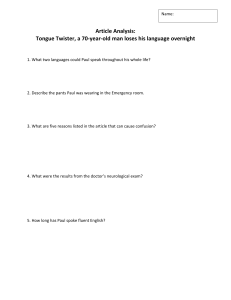
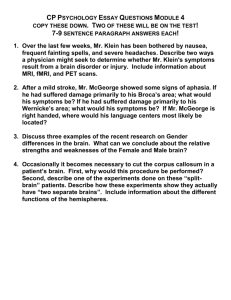
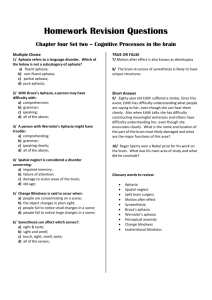
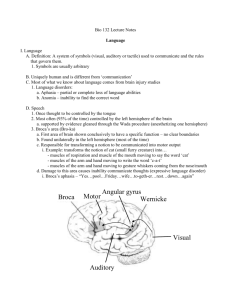
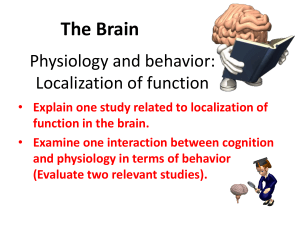


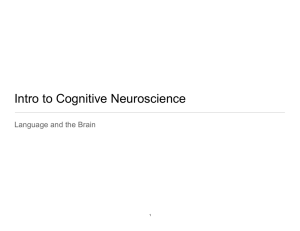

![Wernicke`s_area_presentation[1] (Cipryana Mack)](http://s2.studylib.net/store/data/005312943_1-7f44a63b1f3c5107424c89eb65857143-300x300.png)